A blog about archaeology, history and art, tv series and movies related. Welcome!
Don't wanna be here? Send us removal request.
Photo




Egyptologist Dr. Aidan Dodson talks about newly discovered pyramid remains [X]
92 notes
·
View notes
Text

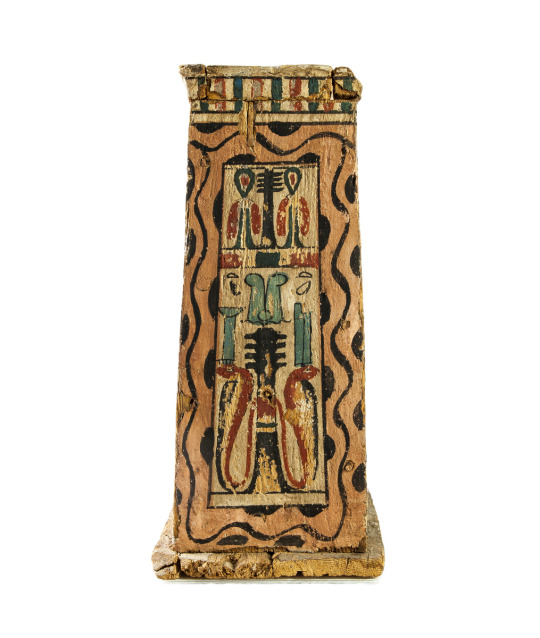

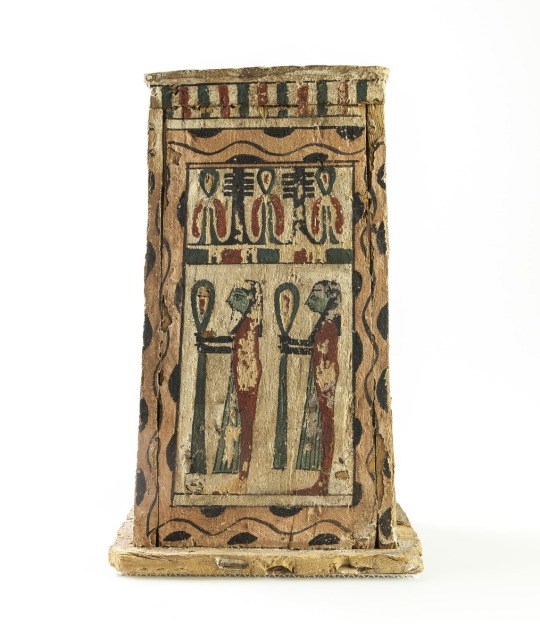
~ Funerary Container.
Place of origin: Akhmim, Egypt
Period: Ptolemaic
Culture: Roman
Medium: Wood
402 notes
·
View notes
Text
“Nothing is perfect. Flaws are interesting.”
— Speak, Laurie Halse Anderson
281 notes
·
View notes
Photo

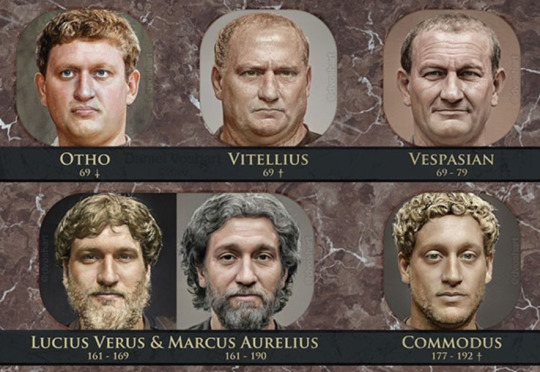

Digital artist Daniel Voshart recreates the ‘real’ faces of Roman emperors thanks to machine learning. You can learn more about the process, discover more emperors or buy a poster here.

[Marcus Aurelius]
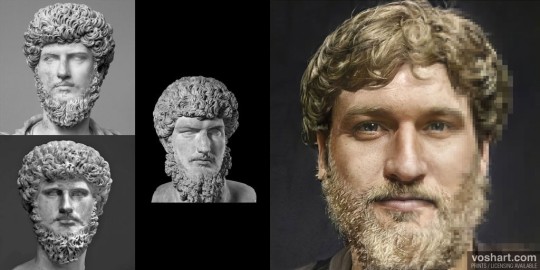
[Lucius Verus]

[Trajan]
38K notes
·
View notes
Photo

Marie Triepcke Krøyer (Danish, 1867 - 1940): Double portrait of Marie and P.S. Krøyer (1890) (via Wikimedia Commons)
639 notes
·
View notes
Photo

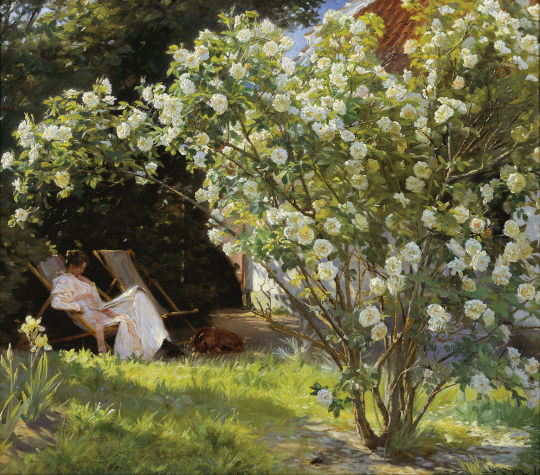
Loggia in Ravello, 1890, and Roses, 1893, by Peder Severin Krøyer (1851-1909)
22K notes
·
View notes
Photo
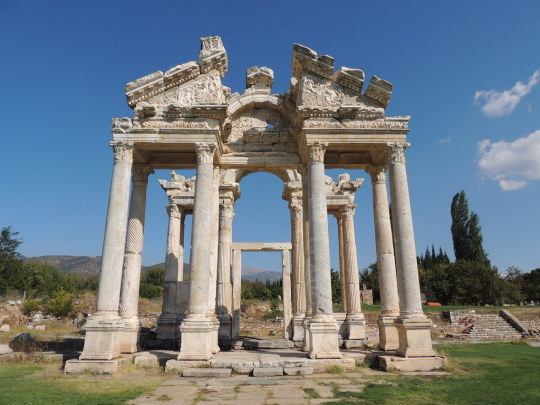

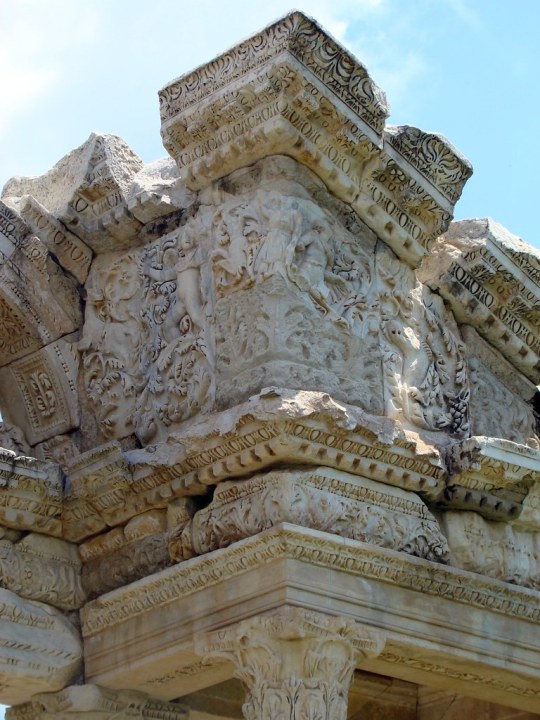

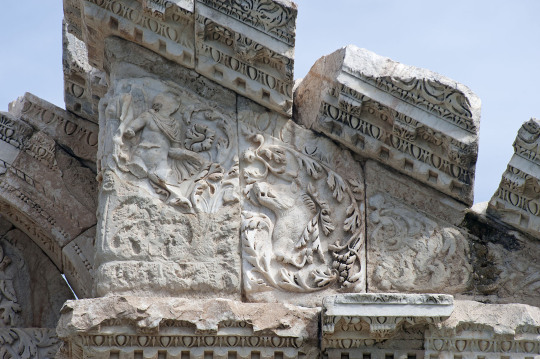
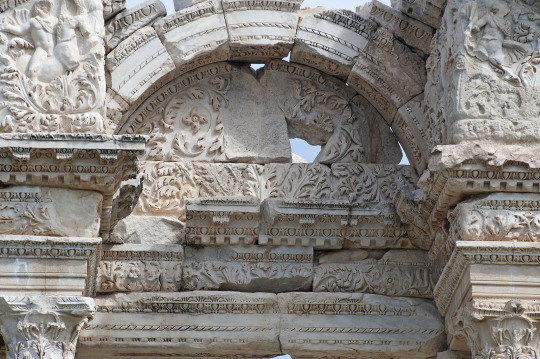
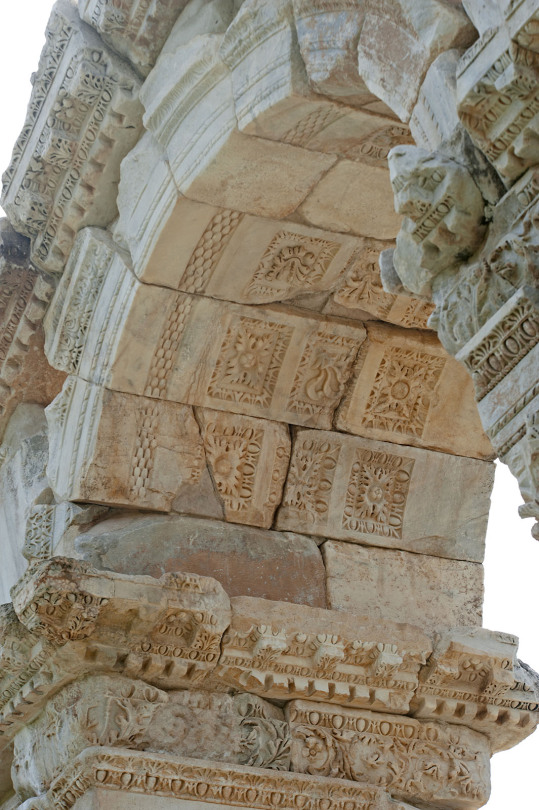

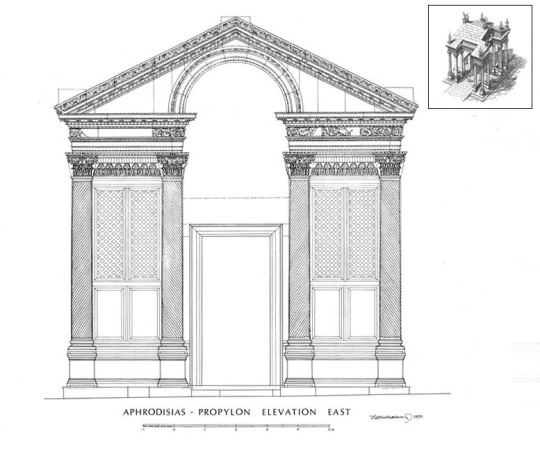
Tetrapylon of Aphrodisias
Aphrodisias, Asia minor (Turkey)
2nd century CE
The Tetrapylon was the monumental columnar entrance to the sanctuary of Aphrodite. It has sixteen columns (4 X 4) supporting elaborate pediments on each side. A complete stone-for-stone reconstruction or anastylosis of the structure, using 85% original blocks, was completed in 1991. It is a richly ornamented prestige building in the style of the Antonine period (mid-later second century CE). One entered on the east side, from a major north-south street, and passed through the gate into a large open forecourt before the sanctuary proper. Looking back from the inside at the west façade of the gate, the visitor would see an even richer elaboration of the architecture that marked this as the interior. One moved through the gate from the public space of the street to the space of Aphrodite. The broken-recessed west pediment is decorated with high-quality relief work of Erotes hunting in acanthus foliage and with deeply carved architectural ornament in an encrusted imperial style that represented majesty and grandeur. A figure of Aphrodite framed in an acanthus calyx in the central lunette was erased in the Christian period and replaced with a crudely engraved cross.
Sources: 1, 2, 3, 4, 5
1K notes
·
View notes
Photo
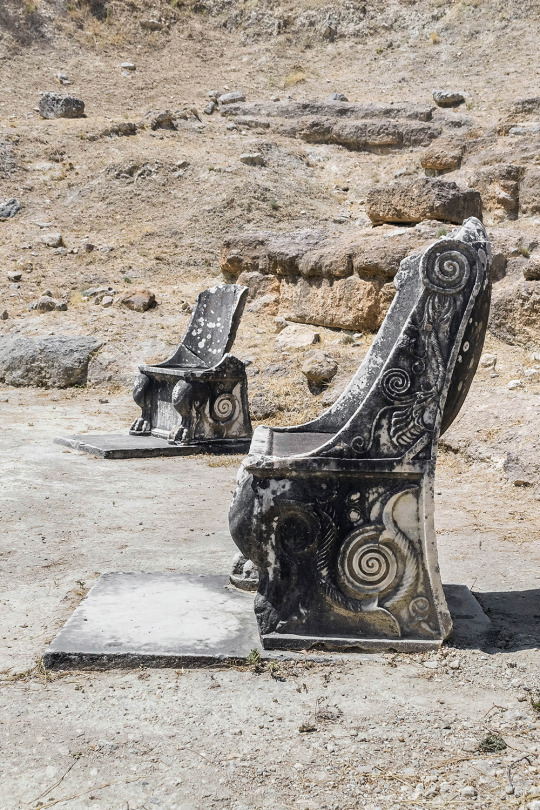
Marble throne chairs at the ancient theater of Oropos (Amphiareion archaeological site), Attica, Greece
16K notes
·
View notes
Photo




Conservator Ahmed Abdrabou talks about conserving TUTANKHAMUN’s outermost coffin. This is the first time it has left the Valley of the Kings. It is being prepared for display in the new Grand Egyptian Museum in Cairo.
409 notes
·
View notes
Photo
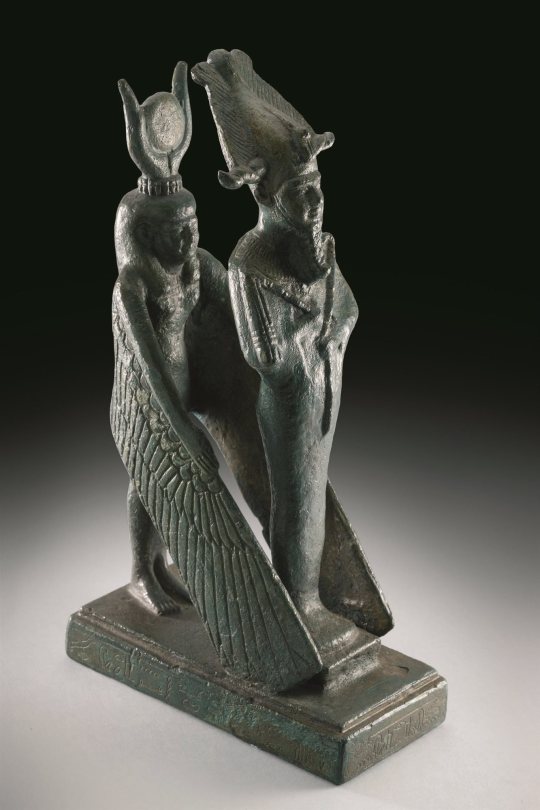
Statue Isis and Osiris
Bronze statuette representing Isis and Osiris. Late Period, 26th Dynasty, ca. 664-525 BC. Now in the Egyptian Museum of Barcelona.
320 notes
·
View notes
Photo



Pirates of the Caribbean: Dead Man’s Chest (2006)
60K notes
·
View notes
Text
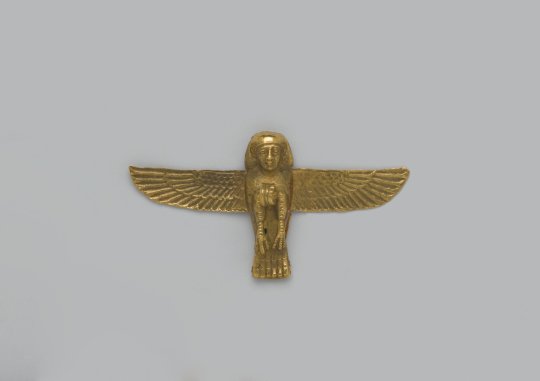
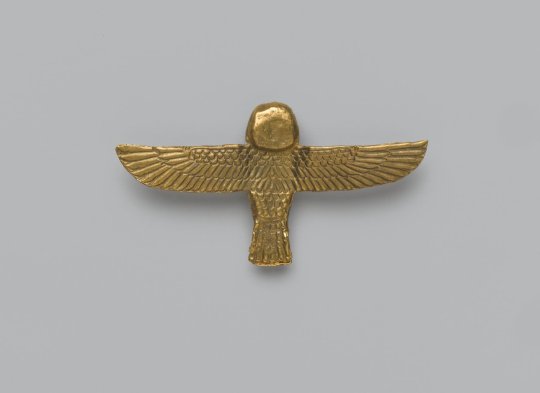
~ Ba Amulet.
Place of origin: Saqqara, Egypt
Period: 26-30th Dynasty; Late Period
Medium: Gold
1K notes
·
View notes
Photo
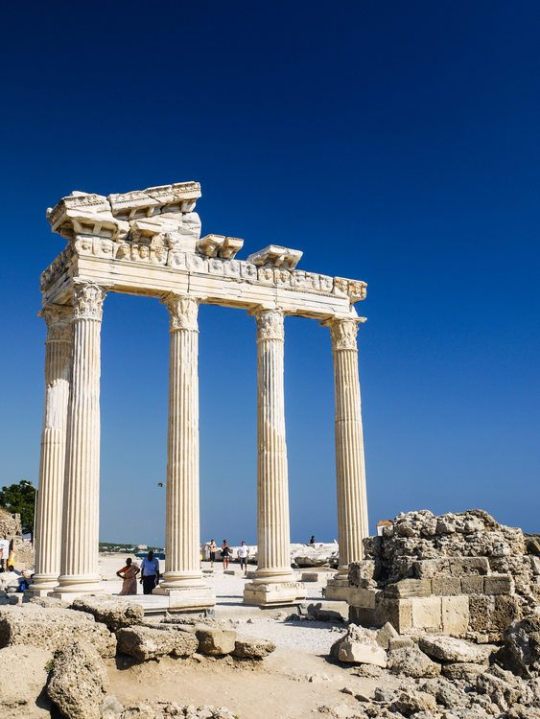
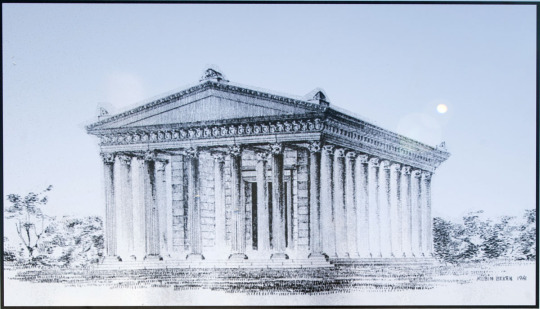

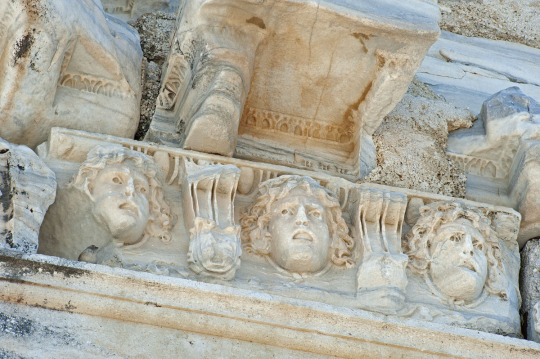
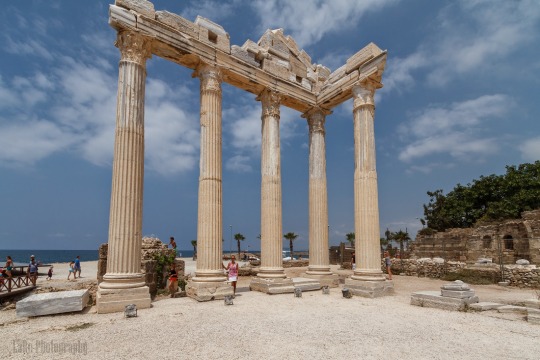



Temple of Apollo
Side, Asia Minor (Turkey)
2nd century CE
The Temple of Apollo is a hexastyle Corinthian temple in Side, Turkey. It originally had 6 front columns and 11 side ones. 5 of its columns were re erected in modern times. What made it different from other temples of that era, is its antechamber which had a pair of massive Corinthian columns. It is believed to be the place where Anthony met Cleopatra; he presented the Apollo Temple as a token of his love and devotion to her.
From an architectural point of view, this temple was a peripteros i.e. it was surrounded by a colonnade on all four sides of the inner chamber (called cella or naos). In the case of the temple of Apollo this colonnade was executed in the Corinthian order. Each longer side of the building was originally adorned with 11 columns and both shorter sides were decorated with 6 columns.
The stylobate of Apollo’s temple, that is the top step of the platform on which colonnades of temple columns were placed, has the dimensions of about 16 meters (52 feet) by 30 meters (98 feet). Five columns that are currently standing were re-erected as part of the reconstruction work carried out in the 80s of the 20th century under the supervision of Professor Jale İnan. The frieze placed above them depicts the heads of Medusa - a mythological monster that had the face of a human female with living venomous snakes in place of hair.
The two main deities of Side in Roman era were Apollo and Athena. One of the two temples built in Side during the period known as the Roman Peace is the Temple of Apollo. Apollo is known as the god of music, poetry, sun, and light in Roman mythology. The other temple constructed in this period is the Athena Temple built in the honor of Athena, the goddess of wisdom and skill. These two temples lie close to each other on the tip of Side peninsula.
It is believed to be the place where Anthony met Cleopatra; he presented the Apollo Temple as a token of his love and devotion to her. (according to a local legend, and not backed by any account)
Sources: 1, 2, 3, 4, 5, 6

699 notes
·
View notes
Photo

Nymph followed by Apollo, Maurice Quentin de La Tour
47 notes
·
View notes
Photo

Ancient Greek ivory appliqué (probably originally part of a furniture decoration) depicting a satyr, wearing a deerskin around his neck and carrying a club to mimic Heracles. Artist unknown; 2nd cent. BCE. Found on Sicily; now in the Walters Art Museum, Baltimore. Photo credit: Walters Art Museum.
176 notes
·
View notes
Photo

The Fall of Icarus, Jacob Peter Gowy, 1635-37
633 notes
·
View notes
